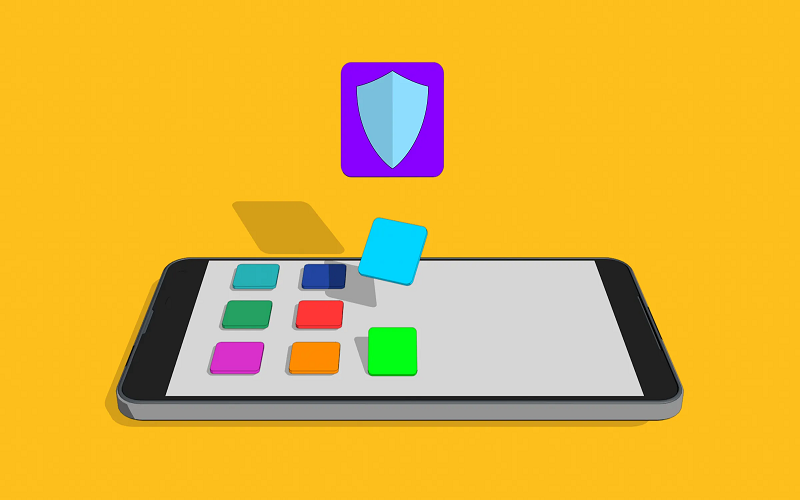Introduction
App shieldingprovides the same protective benefits for your applications as putting armor on your mobile applications gives them against digital menaces. This is just like knights using swords for self – preservation and shielding to protect themselves from attackers; apps need a shield around them so as not to be hacked by hackers. That’s why special devices and programs exist that are aimed at teaching hackers the hard way and enabling them to break into your apps in order not to steal the private data you have.
App Shielding: The Importance
Hackers are constantly developing new methods of bypassing apps or their symptoms are further complicated. Such programs might be aimed at the stealing of your passwords or credit card numbers, or they can be focused on capturing your device. An add-on by app the name shielding is the one particular security mechanism that makes the processes more difficult and keeps your information and devices secure.
How App Shielding Works
Let’s imagine that your app is an elegant house full of expensive belongings. The same as a house when it is locked securely with strong locks, security cameras, and alarms, to put it simply, application shielding will protect the app. It does this with techniques like encryption to shut down anyone who steals data from the person by using a key that he or she solely possesses. App shielding can also detect this malicious activity, such as some breaking in, and force the situation to stop before any damage is done.
Shielding Techniques of Mobile Application Protection Types.
There are different ways app shielding can protect your apps:There are different ways app shielding can protect your apps:
- Code Obfuscation: This method will, therefore, make the code you are building appear difficult to understand. It’s akin to using a secret language that only your app can understand, which is unlike what the hackers would be reading and makes it tough for them to see how your app works and discover weak spots.
- Tamper Detection: App shielding can cause the manipulation of your app code and data to be detected by malware. It has full capability to take any actions based on its analysis, should it detect something that shouldn’t be in there. That way, your data remains safe.
- Environment Checks: Also using app shielding, can prevent the background running of your app using code and device state checks. Say, for example, you must restrict the operation of your app on a device that is rooted or jailbroken so it is more vulnerable to attacks.
- Secure Communication: For Cloud app developers, proper communications with servers or other devices requires the use of shielding or encryption methods provided by the app. In this way,malevolent hackers can’t listen in on sensitive information being conveyed over the airwaves unhindered.
The pros of Utilizing App Shielding
- Protects User Data: A positive safety effect that shielding provides by adding security layers is that your data can’t be compromised and accessed by intruders.
- Secures Transactions: In the digital world, the use of e-money and other online payments is a common phenomenon but they become more secure when your app is shielded from tampering which will, in turn, reduce the probability of fraud.
- Maintains Trust: Users, when they realize that a security system has a backbone, incorporate your app into their lives to protect their sensitive information and hence get a more secure and satisfying experience.
- Compliance: Security app shields are crucial for such types of apps to fulfill the legislative and regulatory requirements and voluntary standards for data protection, to remain compliant with the law.
Challenges and Considerations
While app shielding offers significant security benefits, there are some challenges and considerations to keep in mind:While app shielding offers significant security benefits, there are some challenges and considerations to keep in mind:
- Performance Impact: The app shielding strategy can lead to performance corner-cutting as the application might function slower or consume additional resources. In addition to the features mentioned, the importance of maintaining a balance between security and performance for an enjoyable user experience cannot be overstated.
- Compatibility Issues: Certain app shielding techniques may not work with every device or operating system making the app universal may also call for a separate version for certain devices. Developers must conduct comprehensive tests on their applications to align them with both platforms.
- Maintenance: App shielding should not be thought of as a one-time task. It demands continuous updates and maintenance to be up to the attackers for advanced and evolving threats. Developers have to be always alert for any changes and tweak their powering mechanisms when the need arises.
- Cost: The use of hardware security measures to secure mobile apps may yield more expense concerns to developers, especially with small companies or startups. Functional maintaining the balance between affordability and security is equally necessary.
Best Suggestions on App Shielding
To make the most of app shielding, follow these best practices:To make the most of app shielding, follow these best practices:
- Understand Threats: Keeping updated about the most current cybersecurity risks will help you focus on the shielding you put in place in your app.
- Use Multiple Layers: Consider the usage of the multi-pannel approach to shield the application from unauthorized activity. A more complex security layer is capable of responding adequately to multiple attack pathways or vectors.
- Regular Updates: Stay on the upbeat of your app shielding tools and techniques as they evolve. Updating your app regularly to cover hazardous areas and to make it more secure.
- User Education: Educate your users on the necessity of application security or otherwise and train them in setting strong passwords and using the security features.
Conclusion
App-shielding, usually considered one of the most important security aspects in the mobile application world, is prevalent in today’s internet world. The technological advancements in the field of data security enable business developers to create very strong data shielding techniques and thus effectively protect the users’ data, keep transactions secure, and ensure trust. The issue of performance impact combined with interoperability remains a potential threat; however, the use of best practices and adapting quickly to the situation will improve the resilience of an app to cyber threats.



